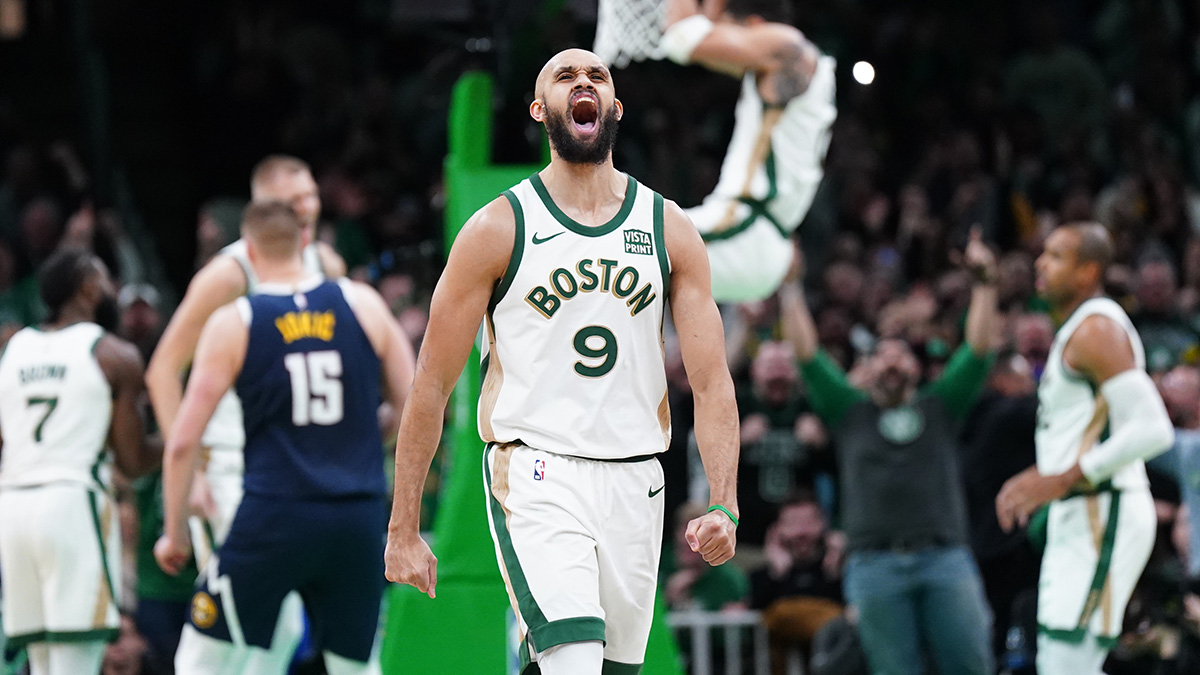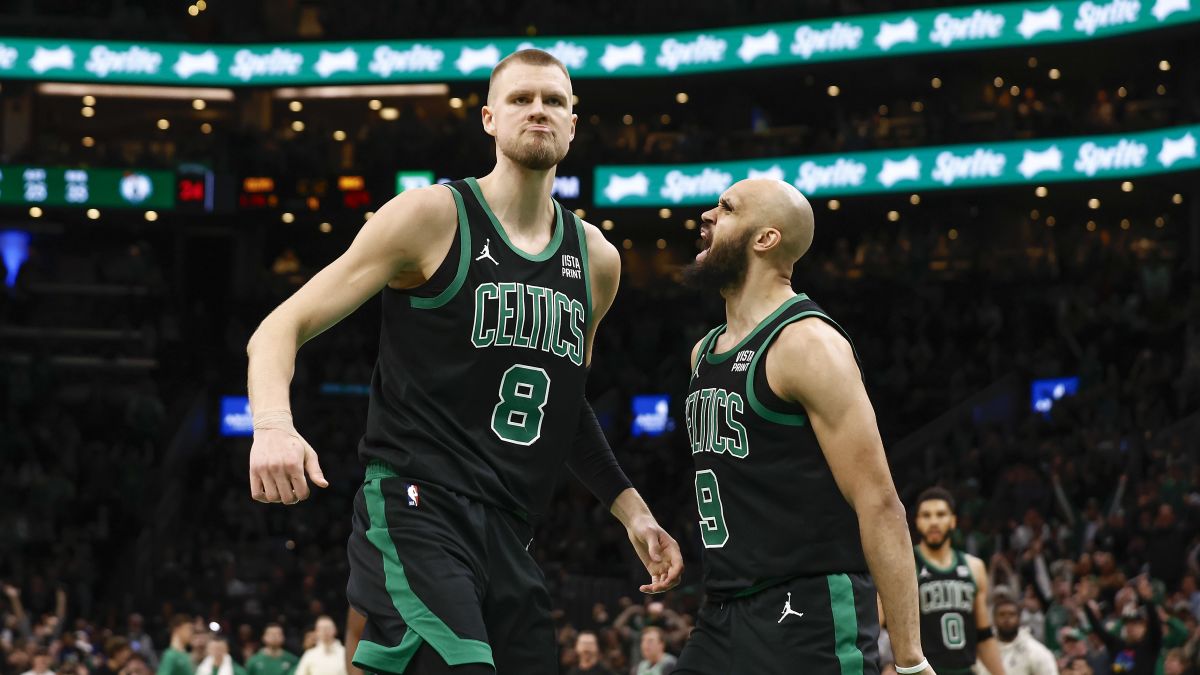LOS ANGELES – As the trade deadline came and went, Celtics Nation had reason to be concerned that the team’s greatest weakness – rebounding – was left unchanged.
Danny Ainge, Boston’s president of basketball operations, knew this was an area of concern going forward, but felt the team’s best days as a rebounding crew were ahead of them.
And lately, rebounding has not been as big an issue for the Celtics as it was the first few months of the season.
In fact, the Celtics come into tonight’s game against the Los Angeles Clippers having won the battle on the boards three consecutive games – a first for Boston this season.
Boston’s rebounding percentage has indeed been on the rise in comparison to how they have fared this season.
In the last five games, Boston’s rebounding percentage has been .515 which ranks 10th in the NBA during that span.
For the season, they are 27th with a rebounding percentage of .482.
Boston Celtics
But the area of rebounding growth they’ve made the greatest strides in comes on the defensive side of things.
The Celtics have been one of the NBA’s worst defensive rebounding teams, which has allowed teams to have far too many second and third-shot opportunities.
But in the last five games, defensive rebounding has actually been a strength of the Celtics.
In that span, the Celtics rank sixth in the league with a .782 defensive rebounding percentage compared to just .751 on the season which ranks 29th in the league.
One of the more obvious reasons for the improved rebounding numbers is the fact that Boston’s big men – Amir Johnson and Al Horford, specifically – have had stronger games rebounding the ball lately.
Both still have their Casper the Friendly Ghost moments when they completely disappear on the glass.
But for the most part, recent games have shown them to be far more impactful in attack the glass at both ends of the floor.
This season, Johnson is averaging 4.6 rebounds with a rebounding percentage of .132.
In Boston’s last five games, Johnson’s rebounding percentage is up to .148 and his overall rebounding average has increased to 5.4 per game.
As for Horford, he’s averaging a career-low 6.6 rebounds per game with a rebounding percentage of .115.
But in Boston’s last five games, Horford’s rebounding percentage is up to .120 while his overall rebounding average has increased to 7.3 per game.
Neither one of them has transformed into putting up Ben Wallace-like rebounding numbers or anything like that. But for a team that shoots as much as they do from the perimeter, even the slightest increase in terms of rebounding the basketball is a huge plus in terms of improving their chances at winning.
And now that Avery Bradley (Achilles) is back (sort of), Boston’s ability to steadily improve as a team rebounding the ball should only get better which they hope will be enough to either surge past Cleveland in the standings for the top spot in the East, or stand pat in their current position as the Eastern Conference’s number two team.


